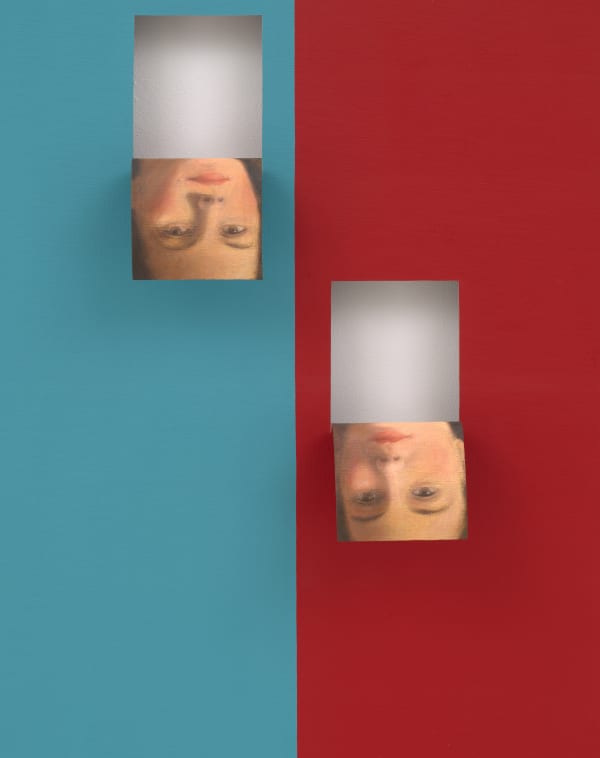Frieze London
The Regent's Park | 13 Park Square W, London | Booth C12 | October 12–16, 2022
Preview (invitation-only): October 12, 2022
Public Days: October 13–16, 2022
Alexander Gray Associates presented an exhibition of recent and historical paintings, sculptures, and works on paper by Ricardo Brey, Luis Camnitzer, Harmony Hammond, Steve Locke, Joan Semmel, Valeska Soares, and Hugh Steers, with a special presentation of recent works on paper by Ronny Quevedo.
Ricardo Brey’s practice synthesizes the complex visual vocabularies of his native Cuba with a deep understanding of the Western art canon, creating works that reflect upon his own philosophical and metaphysical inquiries. Implying the vastness of the universe with its disparate yet connected celestial bodies, Brey’s Slowly (2021) invites us to consider humanity’s unique, but ultimately tiny place within a much greater and expansive cosmos.
Harmony Hammond crafted Buried Secrets (1991) from linoleum flooring salvaged from abandoned homes. Covering this material under thick layers of latex, wax, and paint, Hammond’s work hints at transgressions and violence, speculating at what is being hidden and obscured.
Steve Locke’s practice unpicks the complicated relationship between power and portraiture. Works like the pilgrim (2008-2012) incorporate a floating man’s head with his tongue extended into their compositions. Locke employs this visual as a subversive gesture that challenges traditional representations of masculinity, which he sees as foundational to the Western art historical canon.
Joan Semmel’s practice has explored the potential of the artist’s own body as a subject for more than five decades. In Toes to Toes (2001) and Joined at the Hip (2021), Semmel employs both mirror and camera as strategies to “destabilize the point of view (who is looking at whom),” engaging the viewer as both a participant and witness to the artist’s process.
Luis Camnitzer explores the relationship between image and text in his practice. Utilizing clever wordplay, Camnitzer’s Utopiary (2010) suggests that topiaries, representing humanity’s vain and ultimately ephemeral attempt to control nature, are akin to the false promise of utopia—an illusory, perfect realm forever just out of reach.
Valeska Soares adapts minimalist and conceptualist strategies to construct poignant artworks that muse on memory and emotion. In Broken Year (2020–2021), individually-mounted pages from vintage books—each with meaningful or evocative phrases—come together to mark the days of a monumental calendar. Using the restrained formality of the grid, Soares’s work stands as a pensive, even romantic, reflection upon humanity’s ever-changing relationship with time and each other.
Committed to figuration throughout his career, which was cut tragically short by AIDS, Hugh Steers employed what he once described as a “comfortingly recognizable style” to lure in viewers before confronting them with harsh and often challenging subjects. In Fruit Bowl (1990), painted three years after he received his positive HIV diagnosis, Steers constructs a contemporary memento mori, imbuing a seemingly innocuous still life with an unsettling sense of sickness and decay.
The Gallery’s presentation also includes a special display of works by Ronny Quevedo, whose material-driven practice explores the complex and intertwined histories of ethnicity, migration, and labor. ch’ixi (portrait of myself when I am real) (2022) and other works incorporating gold leaf embody a crucial conceptual break from dualistic perceptions of history and lineage, interrogating “how notions of self from the past, present, and future relate [to] and inform a current standing.”
Transfiguring common materials and forms, the works in the Gallery’s presentation emerge as poignant symbols of personal and collective identities, offering intimate glimpses into what Hugh Steers once described as “the humanity of a moment.”









